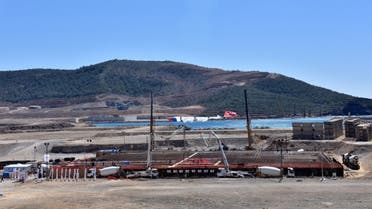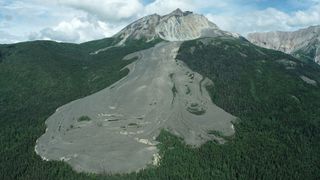Tech Billionaires Are Betting Big On Nuclear Power
- Nuclear power is back, in a big way.
- Silicon Valley billionaires are betting big on the clean energy tech.
- Between 2015 and 2021, investment in nuclear energy grew around 325 percent by volume and 3,642 percent by dollar value.
Once a taboo topic, nuclear power seems to be the words on everyone’s lips, as governments worldwide put power stations back on their agenda in a bid to accelerate the green transition and ensure greater energy security for the coming years. Following several notorious nuclear disasters in previous decades, governments, environmentalists, and a fearful public decided nuclear power was too dangerous an energy source to continue producing. But after a moment of pause, the re-evaluation of the high safety standards of nuclear power, and as we face global energy shortages, nuclear energy is getting a resurge in attention, particularly from tech billionaires who appear to want a piece of the nuclear pie
Despite the negative public impression of nuclear power, due to famous disasters, including Chornobyl and Fukushima, nuclear energy has actually been shown to be one of the safest power sources. According to the measure of deaths per unit of electricity produced by the various types of energy worldwide, nuclear power is way down the list. Studies show that coal is by far the most dangerous energy source, partially due to its production through mining in difficult conditions, but mainly owing to the pollution caused by burning coal, which has led to a vast array of diseases and deaths.
In addition, nuclear power offers abundant low-carbon energy, something that governments worldwide have been racing to develop to meet their climate pledges. As we face global energy shortages, in the wake of the Russian invasion of Ukraine and subsequent sanctions on Russian energy, political powers are realising the importance of becoming more self-sufficient in their energy production and not simply coming to rely on fossil fuels from other foreign powers.
Now, nuclear power is getting the backing of Silicon Valley and other major tech regions, with tech giants beginning to invest in the development of nuclear energy facilities. As tech majors bring their expertise and funds to the nuclear industry, there is a significant potential for greater innovation to be seen in the development of nuclear hubs for the first time in decades.
The economist and lecturer at MIT, John Parsons, stated of the increase in interest, “I think having fresh perspectives is really good.” He explained nuclear energy is “a very complex science, and it’s been supported by the federal government and at these national labs. And so that’s a very small circle of people. And when you broaden that circle, you get a lot of new minds, different thinking, a variety of experiments.”
Between 2015 and 2021, investment in nuclear energy grew around 325 percent by volume and 3,642 percent by dollar value, according to Pitchbook. This year alone, venture investors devoted a record $3.4 billion to nuclear startups. While this is significantly lower than the investment in other renewable energy sources in recent years, due to the nuclear power industry having to start almost from scratch, it shows a significant rise in interest that is expected to continue. Greater investment in the sector will be supported by President Biden’s Inflation Reduction Act (IRA), which offers companies tax breaks and other financial incentives for investing in green energy, including nuclear power. And in March, the U.S. Congress approved record funding for a public-private partnership programme to build new fusion devices, encouraging private companies to invest more in the sector.
This year, several tech billionaires have publicly shown their backing for the energy source. Elon Musk tweeted that nuclear is “critical” to national security. Meanwhile, venture capitalist Marc Andreessen called for “1,000 new state-of-the-art nuclear power plants in the U.S. and Europe, right now.” Similarly, Bill Gates, Jeff Bezos, and Peter Thiel have all financed nuclear projects in recent years. In fact, Josh Freed, from Washington-based think tank Third Way, believes: “We wouldn’t be having a conversation about innovation in nuclear power today without the investment and thinking of the leaders of Silicon Valley.”
As well as existing nuclear plants, several startups are catching the eyes of tech giants. It is still early days and these startups have yet to produce nuclear power. But some think they’re getting much closer. Christofer Mowry, CEO at Vancouver-based General Fusion, explained “Silicon Valley has been the foundation of the entire private fusion industry.” And the technological advances coupled with greater urgency to shift to green could be a catalyst for the industry.
Following decades of stagnation, nuclear energy companies are finally getting the boost they need to develop projects and deliver meaningful amounts of low-emissions nuclear power to the U.S. Previously, the Watts Bar Nuclear Plant, that was the last nuclear project to be approved, in 1973, faced major delays and cost increases meaning that production only began in 2016. But now, existing nuclear plants are gaining state and private support, while startups are receiving the funding needed to develop innovative technologies to support the advancement of nuclear power.
By Felicity Bradstock for Oilprice.com







:format(webp)/https://www.stcatharinesstandard.ca/content/dam/thestar/news/gta/2022/12/24/fears-for-ontario-wetlands-as-province-finalizes-changes-to-evaluations-despite-thousands-of-letters-opposed/_1pickering.jpg?resize=780,470)

